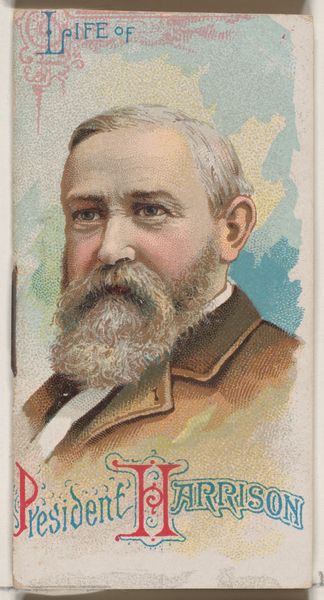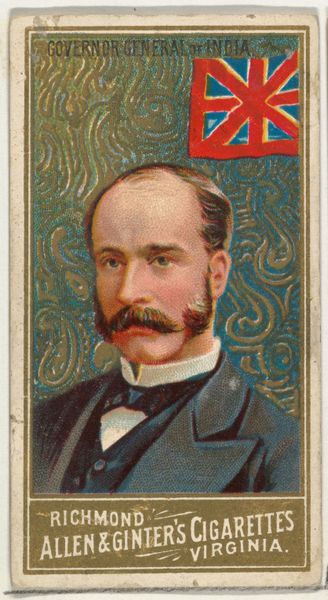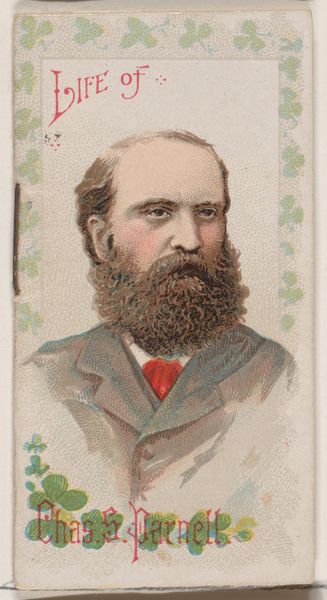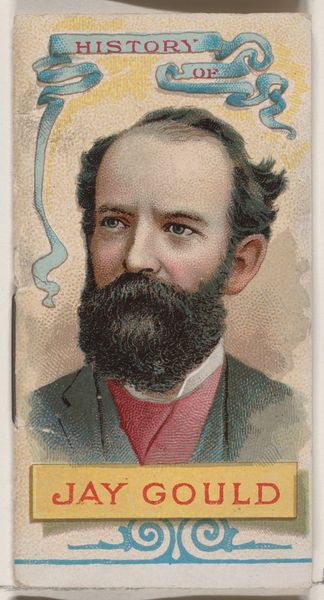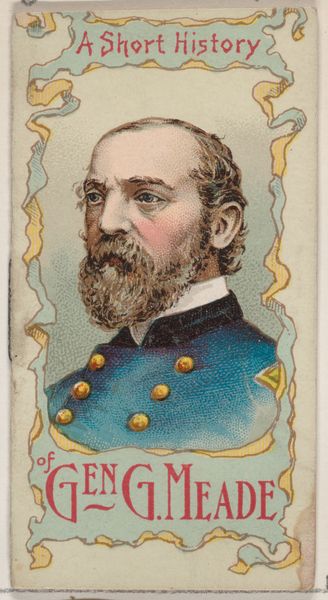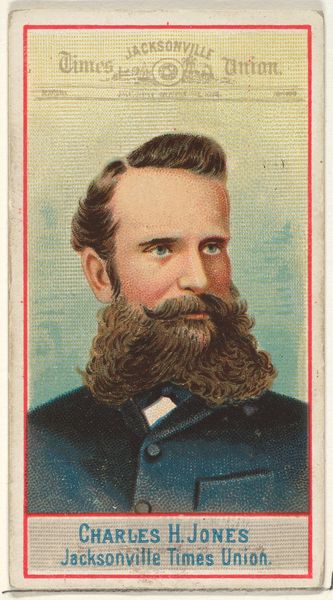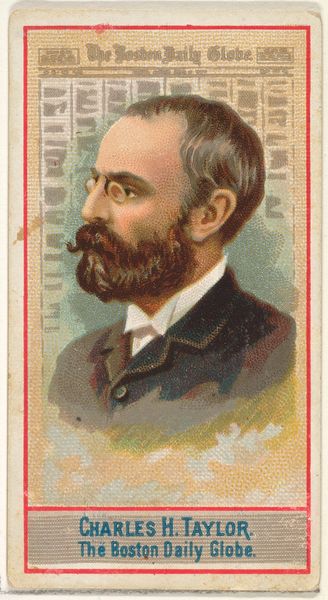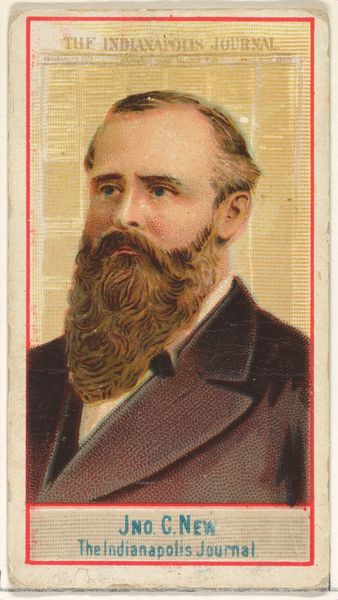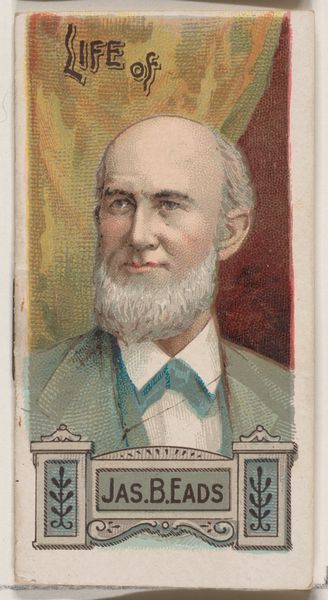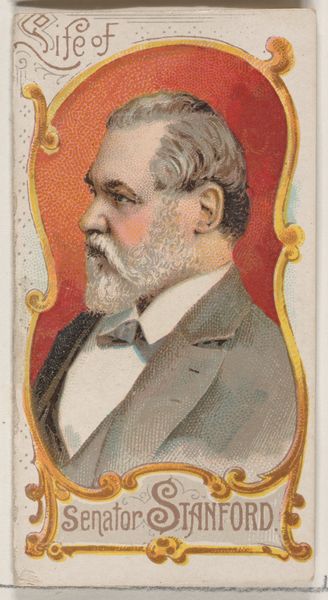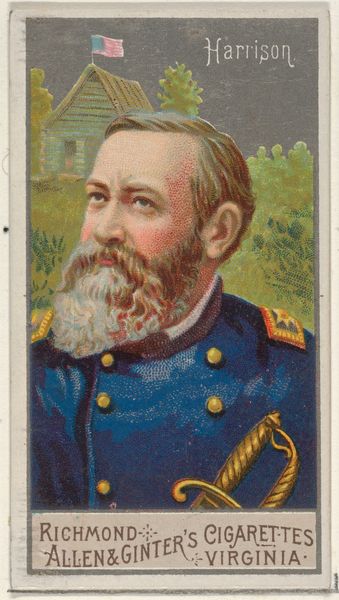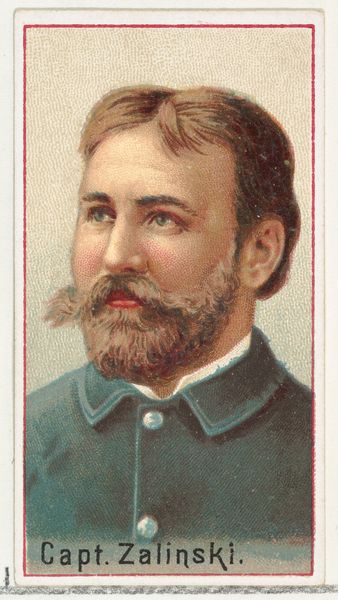
James A. Garfield, from the series Great Americans (N76) for Duke brand cigarettes 1888
0:00
0:00
drawing, lithograph, print, paper
#
portrait
#
drawing
#
lithograph
# print
#
caricature
#
paper
#
framed image
#
men
#
portrait drawing
#
facial portrait
#
portrait art
Dimensions: Sheet: 2 3/4 × 1 1/2 in. (7 × 3.8 cm)
Copyright: Public Domain
Curator: Here we have a lithograph from 1888: "James A. Garfield, from the series Great Americans (N76) for Duke brand cigarettes". Editor: My initial thought is the idealized presentation of Garfield. There's an almost romantic softness to his features, a sort of virtuous glow emanating from the portrait. It feels like an attempt to cement a specific narrative around him. Curator: Absolutely. Cigarette cards like this one weren't just innocent collectibles; they actively participated in shaping public opinion. To see Garfield memorialized like this, not long after his assassination, is really part of constructing an idea of American heroism that companies wanted to be associated with. Editor: The shield behind him—the stars and stripes—it’s such an obvious, but powerful, symbol. It’s not just about patriotism; it's about invoking a sense of national unity and almost divine favor around his image. They’re practically turning him into an icon! Curator: Well, he served as president during a turbulent time, bridging the Reconstruction era and the rise of industrial America, so it’s not surprising that the "Great Americans" series wanted to leverage him to evoke feelings of nostalgia and stability. Especially tied to something as everyday as cigarette consumption. Editor: It is interesting that they positioned his profile. From a symbolic point of view, this shows thoughtfulness and wisdom. It’s a common posture to see in classical busts of important leaders. So while accessible to the everyday man, this image presents a well thought-out, intellectual individual. Curator: True. It’s also crucial to remember the power dynamics. Images like this distributed and consumed widely did help to create shared visual language, but it’s important to ask *who* was doing the sharing, and to what end? Here, it’s a tobacco company selling a product and simultaneously selling a vision of American identity. Editor: The very fact that he is linked to a brand speaks volumes about that time! This small card really captures much about late 19th-century America. It presents an opportunity to study political memory and social structure via popular culture. Curator: And understanding that link, how commercial and political imagery can blend so seamlessly, can offer insights into how such mechanisms still work today. Thanks for those insightful details about symbolism! Editor: Thank you! Analyzing that small picture gave me a lot to chew on in terms of the big cultural symbolism being projected.
Comments
No comments
Be the first to comment and join the conversation on the ultimate creative platform.
